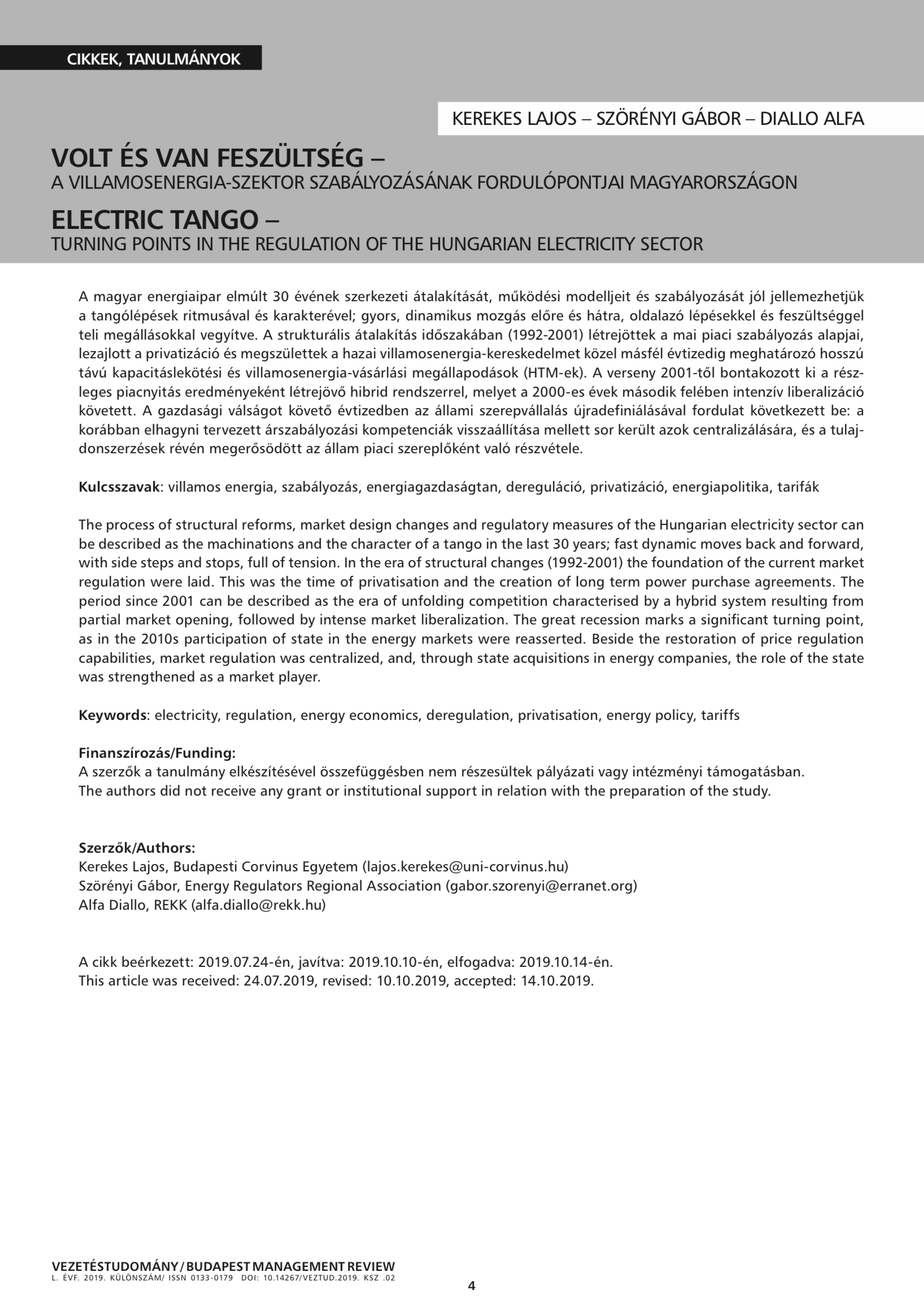Volt és van feszültség
A villamosenergia-szektor szabályozásának fordulópontjai Magyarországon
DOI:
https://doi.org/10.14267/VEZTUD.2019.KSZ.02Keywords:
electricity, regulation, energy economics, deregulation, privatisation, energy policy, tariffsAbstract
The process of structural reforms, market design changes and regulatory measures of the Hungarian electricity sector can be described as the machinations and the character of a tango in the last 30 years; fast dynamic moves back and forward, with side steps and stops, full of tension. In the era of structural changes (1992-2001) the foundation of the current market regulation were laid. This was the time of privatisation and the creation of long term power purchase agreements. The period since 2001 can be described as the era of unfolding competition characterised by a hybrid system resulting from partial market opening, followed by intense market liberalization. The great recession marks a significant turning point, as in the 2010s participation of state in the energy markets were reasserted. Beside the restoration of price regulation capabilities, market regulation was centralized, and, through state acquisitions in energy companies, the role of the state was strengthened as a market player.
Downloads

Downloads
Published
How to Cite
Issue
Section
License
Authors assign copyright to Vezetéstudomány / Budapest Management Review. Authors are responsible for permission to reproduce copyright material from other sources.
